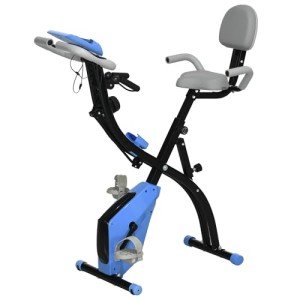The Rise of Stationary Bikes: A Comprehensive Guide
Over the last few years, stationary bikes have actually surged in appeal, becoming a staple in homes, gyms, and fitness studios. Their benefit, versatility, and efficiency in supplying an excellent cardiovascular workout make them an appealing choice for fitness lovers of all levels. This short article checks out the types, benefits, features, and considerations relating to stationary bikes, guaranteeing you have all the details you need to make a notified decision on this vital fitness equipment.
Kinds Of Stationary Bikes
Before purchasing a stationary bike, it's vital to understand the different types available, each catering to varying fitness objectives and choices.
1. Upright Bikes
Upright bikes look like standard bicycles and are suitable for a more intense workout. Riders sit in an upright position, engaging their core and leg muscles.
2. Recumbent Bikes
These bikes include a reclined seating position that offers greater back support. They are perfect for those with back problems or individuals looking for a more comfy pedaling experience.
3. Spin Bikes
Developed for cycling lovers, spin bikes use a more extreme workout experience, frequently discovered in group classes. They include a heavy flywheel and adjustable resistance, permitting an energetic workout.
4. Folding Bikes
For those with restricted area, folding bikes offer a compact option. They can be quickly kept away when not in use, making them best for home occupants or occasional users.
5. Smart Bikes
Leveraging innovation, clever bikes link to apps or virtual cycling platforms, providing interactive exercises, live classes, and efficiency tracking.
Advantages of Stationary Bikes
Investing in a stationary bicycle offers many fitness advantages. Here are some reasons one may think about including this tool to their regimen:
1. Cardiovascular Health
Regular cycling can efficiently enhance cardiovascular fitness, helping to reinforce the heart, boost lung capacity, and enhance circulation.
2. Weight reduction
Stationary biking can help in burning calories and shed excess weight. Depending upon the intensity, an individual can burn between 400 and 600 calories in an hour.
3. Low Impact
Cycling is low-impact, making it suitable for people with joint issues or those undergoing rehab. It enables a safe workout without putting unnecessary stress on the joints.
4. Enhancing Muscles
Cycling works different muscle groups, particularly the legs, glutes, and core. In time, it enhances muscle tone and strength.
5. Versatility and Balance
Regular usage of a stationary bike can improve overall versatility and balance as it encourages better posture and core engagement.
6. Convenient and Flexible
One of the best advantages of stationary bicycles is the ability to work out on your schedule. There's no requirement to commute to a gym; you can ride in your home, at any time of day.
Functions to Consider When Choosing a Stationary Bike
When selecting a stationary bike, several essential features need to be taken into account to ensure you get the very best value and functionality for your needs.
1. Adjustable Resistance
Invest in a bike with adjustable resistance levels. Exercise Bikes Online enables you to tailor your workout strength as you advance in your fitness journey.
2. Ergonomic Design
Choose a bike that uses adjustable seat height and position to keep convenience during workouts. An ergonomic design decreases the risk of injury.
3. Entertainment Options
Consider bikes with integrated speakers or compatibility with music devices. This function can help make exercises more enjoyable, specifically during longer sessions.
4. Display Console
A good screen console tracks important metrics such as time, range, speed, and calories burned. Some advanced models may likewise keep track of heart rate and sync with fitness apps.
5. Rate and Warranty
Stationary bicycles can be found in a series of rates. Set a budget and look for designs that provide a guarantee, guaranteeing you are covered in case of mechanical concerns.
FAQs About Stationary Bikes
Q1: How often should I use a stationary bicycle for ideal outcomes?
A1: For ideal fitness outcomes, go for at least 150 minutes of moderate-intensity cycling weekly. This equates to about 20-30 minutes per session, five days a week.
Q2: Can stationary bicycles help build muscle?
A2: Yes, while stationary bicycles are primarily utilized for cardiovascular workouts, they can also assist tone and strengthen the legs and core muscles, specifically with increased resistance.
Q3: Are stationary bikes suitable for newbies?
A3: Absolutely! Stationary bikes can accommodate different fitness levels, with adjustable resistance settings and comfortable seating choices that make them beginner-friendly.
Q4: Do I need a special type of bike for indoor cycling classes?
A4: While basic stationary bicycles can be used for indoor cycling classes, spin bikes are normally chosen for their heavier flywheels and greater levels of resistance.
Q5: How can I maximize my stationary bicycle workouts?
A5: To maximize your outcomes, consider blending different workout regimens, such as interval training, steady-state rides, and strength-focused cycling sessions.
Stationary bicycles are an outstanding addition to anybody's fitness program. They supply a flexible, effective, and low-impact method to improve cardiovascular health, strengthen muscles, and help in weight management. With different types and functions readily available, it's essential to assess specific needs, choices, and budget before buying. Ultimately, integrating a stationary bike into your regimen can be a significant step towards a much healthier, more active way of life.

